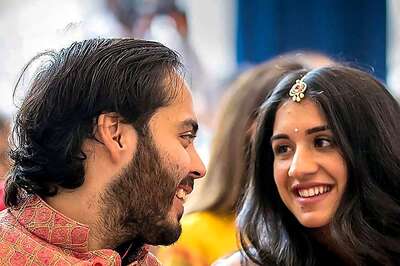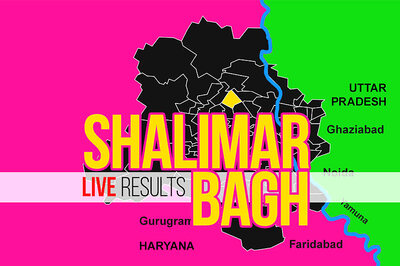'Man of Few Words' Naveen Patnaik Makes Election Pitch in 5-minute Doses to Seek Fifth Term in Power

views
New Delhi: Odisha Chief Minister Naveen Patnaik, who has successively returned to power every time with a better performance since the last two decades, is fighting for his fifth consecutive term.
Considered a strong regional face, Patnaik is perhaps one of the very few popular mass leaders who delivers the shortest speeches.
CNN-News 18 took a look at Patnaik’s public addresses beginning at Kendrapada on March 9 and witnessed how the Biju Janata Dal (BJD) leader tactically unfolded his battle plan.
He launched his campaign with the announcement of reservation of 33% seats for women in the Lok Sabha and unveiled his party’s manifesto for the upcoming elections in Kalahandi in western Odisha.
Patnaik, also a writer, has always been a man of few words as this ensures that his words are not distorted.
Dilip Bisoi, a senior journalist who has tracked Odisha’s politics closely for decades, remembers that when Patnaik expelled the all-powerful Pyarimohan Mohapatra from the BJD following rumours of a coup, he had uttered just one word: ‘beimaan’ (traitor).
Patnaik’s speeches that he delivers in his typical halting Odia are for not more than five to six minutes.
He also makes sure to address his audience in a very formal manner, like using the term ‘apana ‘, meant for those held in the highest esteem, instead of the lesser formal ‘tume’ or the more intimate ‘tu’.
On March 9, in Kendrapada, while addressing a convention of Mission Shakti, a flagship programme of the Odisha government launched in 2001 that has now expanded to include 70 lakh women, Patnaik spoke for less than five minutes, but made one of the most important announcements of the party in recent times.
“Kendrapada was the ‘karmabhoomi’ (workplace) of Bijubabu (Biju Patnaik). He was the son of Kendrapada. From this historic place, I am announcing that in the upcoming election, Odisha will send 33% women to Parliament,” Patnaik said.
The choice of Kendrapada was significant as former Odisha chief minister Biju Patnaik, back in 1990, had reserved 33% seats for women in local bodies which was later enhanced by his son and the current CM.
Incidentally, the same day (March 9), the Election Commission of India announced the dates for the 2019 elections.
Women’s empowerment would be one of the hallmarks of Patnaik’s election pitch.
Exactly nine days later, on March 18, he named Pramilla Bisoyi, a self-help group member of Mission Shakti, as the one of the BJD’s Lok Sabha candidates.
This also later came in handy while responding to BJP president Amit Shah’s jibe that Odisha needed a ‘double engine ‘ (the same government at the state and Centre) for progress.
Addressing a rally in Nuapada on April 8, Patnaik said, “Women’s empowerment is the true double engine for progress.”
On March 12, Patnaik welcomed his Bengal counterpart and Trinamool Congress chief Mamata Banerjee’s decision to nominate over one-third women candidates for the general election.
He wrote in Twitter, “… with the gathering momentum, India could see a sea change in electoral and development domain.”
The same day, he also reminded his supporters of Mahatma Gandhi’s push for women’s empowerment. He wrote, Gandhiji was a great votary of #WomenEmpowerment and advocated higher representation for women in legislative bodies. Allocation of 33% seats for women will be a humble tribute to the Father of Nation on his 150th birth anniversary”.
On March 24, in a characteristically short and pithy speech, Patnaik said, “No regional party would get complete majority to form the next government at the Centre and the people of Odisha will play a key role here. This is a golden opportunity to reply to the historic neglect of Odisha.”
He said state BJP leaders, despite being aware of the Centre’s attitude towards the state, did nothing as they were being “remote controlled” by the party “high command”.
The chief minister said the saffron party had betrayed its 2014 manifesto promise of granting special category status to Odisha. He also blamed the BJP government at the Centre for Odisha’s poor railway network.
He said that even as the Union government earned thousands of crores of money as revenue through coal mining, people of the state got only “dust and smoke”.
To further his argument of central lapse, Patnaik said, “When the BJP government in Chhattisgarh stopped water from the Mahanadi river, Odisha had to seek justice from the Supreme Court. However, in the Polavaram (multipurpose irrigation project) case, the Centre supported the Andhra Pradesh.”
The government’s most ambitious scheme, KALIA (Krushak Assistance for Livelihood and Income Augmentation), also finds a mention.
The pitch is simple, “The BJD is the party of the people of Odisha. The people are the high command. They are our remote control. We are fighting for the interest and self-respect of the people of Odisha.”
On April 3, when Patnaik addressed a rally at Gopalur that has weathered many storms, the BJD president spoke for just over five minutes.
“They did not come when Phailin, Hudhud, Titli ravaged the land or when droughts struck. The moment elections come, they make an appearance for votes. The tall leaders of BJP are shedding crocodile tears,” said Patnaik, adding, “They make big promises ahead of elections and then disappear. But the four-and-a-half crore people of Odisha are my family members. I am with you and will remain with you.”
Referring to the break in disbursement of KALIA assistance, Patnaik said, “Farmers will teach the BJP a lesson for opposing disbursement of KALIA money to the remaining 20 lakh peasants,”, He signed off with an urge to voters: choose the ‘sankha’ (conch shell), the symbol of the BJD twice, once for the MLA and then, for the MP.
On April 5, the chief minister, chose Jeypore in Koraput district that is going to polls in the first phase on April 11, to make the most important part of the BJD’s promise to farmers.
“On the first day of the new BJD government, every farmer will get two instalments of Rs 10,000 each as part of KALIA’s assistance,” he said, referring to those who are yet to receive assistance from the scheme.
At Nuapada, where he addressed voters on April 8, Patnaik made another announcement. He promised business worth Rs 5,000 crore for women associated with Mission Shakti after his government came back to power.
“Along with this, there would be insurance against accidents, interest-free loans up to Rs 5 lakh. Girls from economically backward families would get Rs 25,000 rupees as assistance, BSKY (Biju Swasthya Kalyan Yojana) assistance would be raised from Rs 5 lakh to Rs 7 lakh and free education for girls,” he added.
Patnaik, who released the BJD manifesto on April 8 while campaigning in Kalahandi, which also goes to the polls in the first phase, camped in the area for two days after a visit by Prime Minister Narendra Modi.
Bisoi explained, “By remaining brief in his speeches, he gives a talking point for discussion. Also, when he says that BJP’s tallest leaders visit Odisha only during elections and not during natural calamities, he is stating a fact. And, when he says that he is and would always stand by the people of Odisha, and stay in Odisha, he is sending a signal that he does not have prime ministerial ambitions.”
Bisoi drew a comparison between Patnaik and Modi. “Unlike the prime minister, the chief minister does not over-promise and that reduces the level of dissatisfaction among people. Also, Patnaik’s rhetoric is shorter than his work,” he said.



















Comments
0 comment